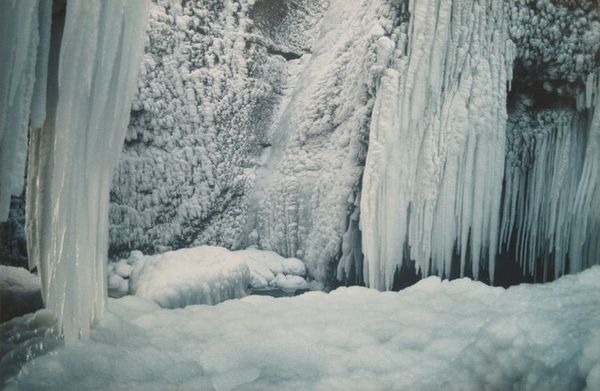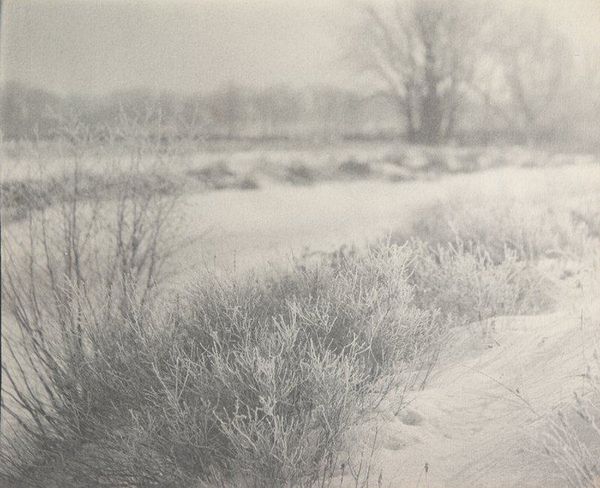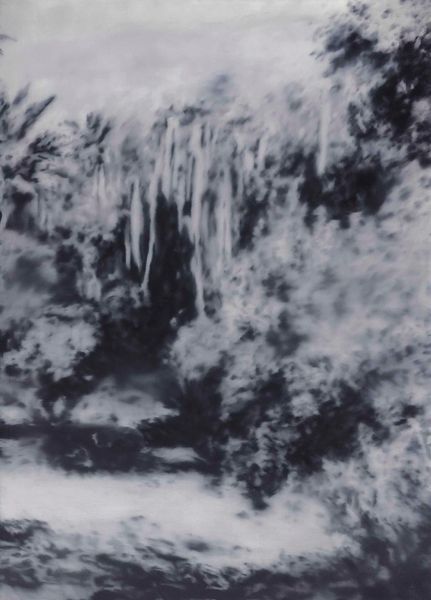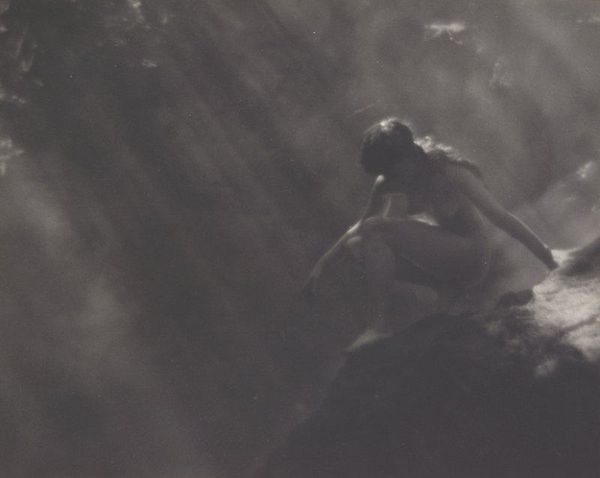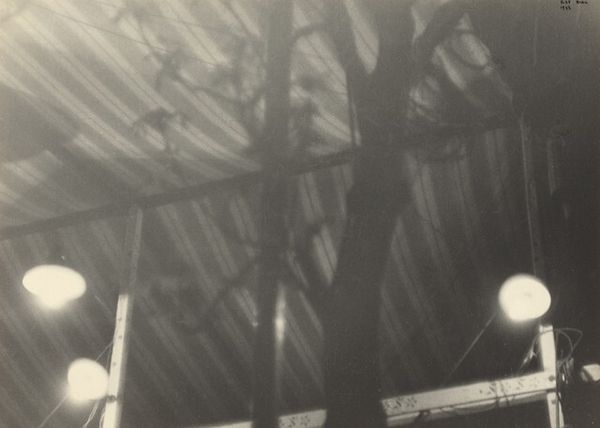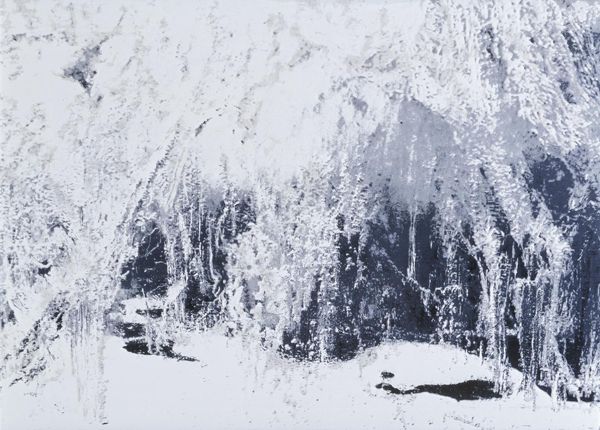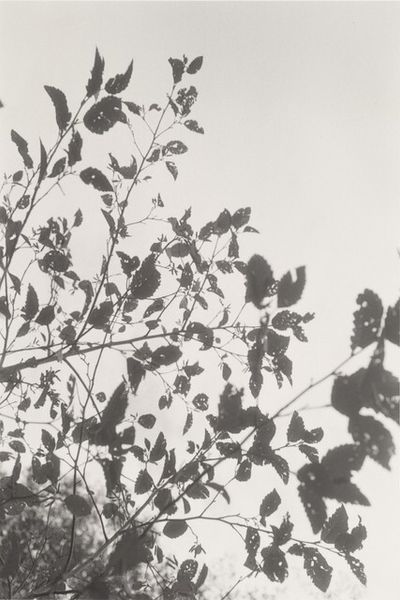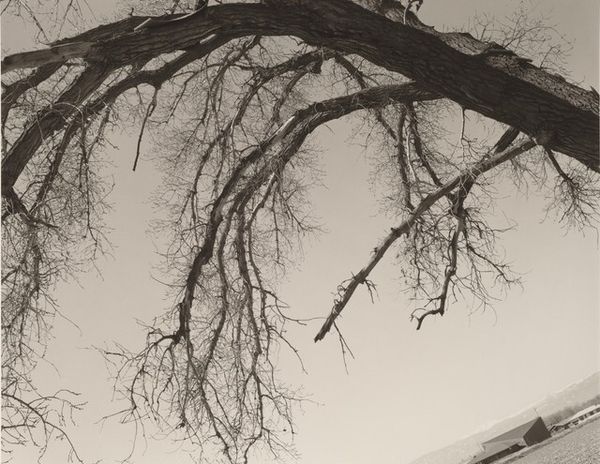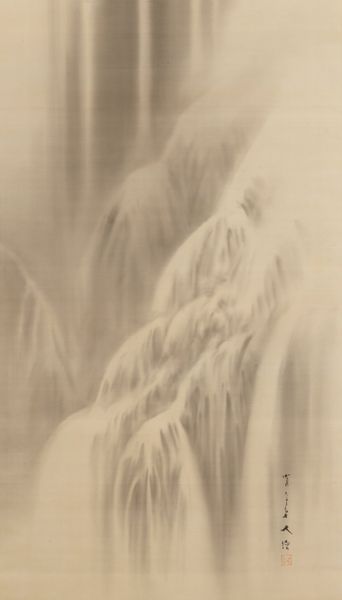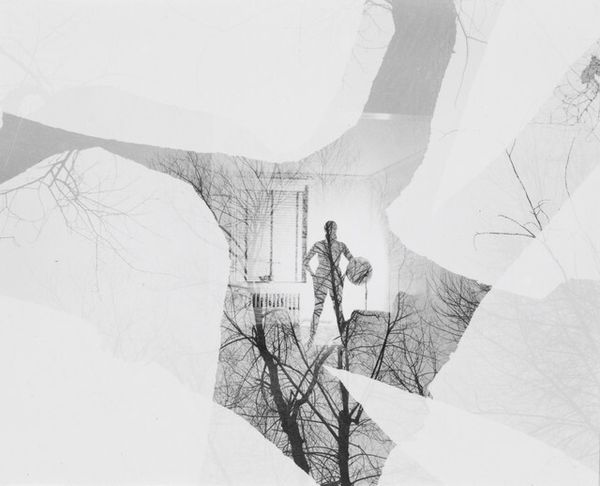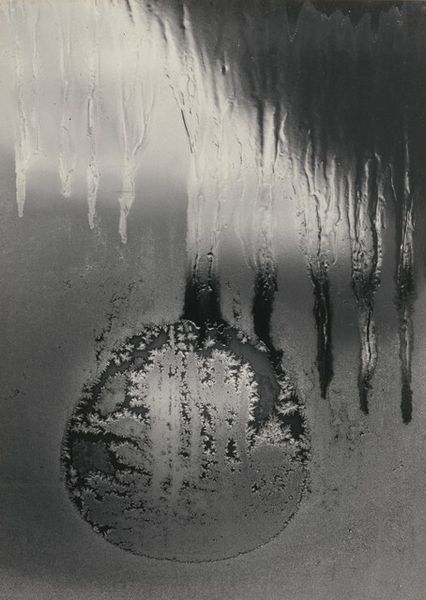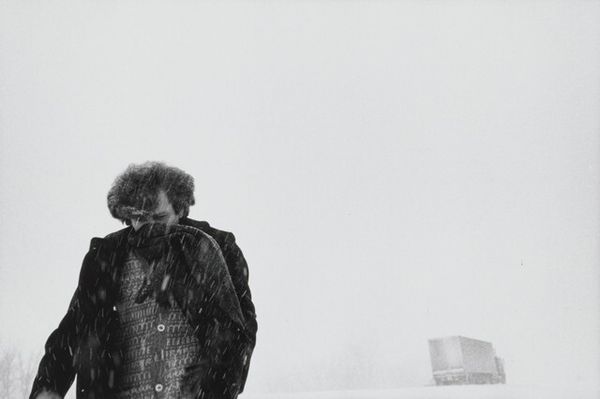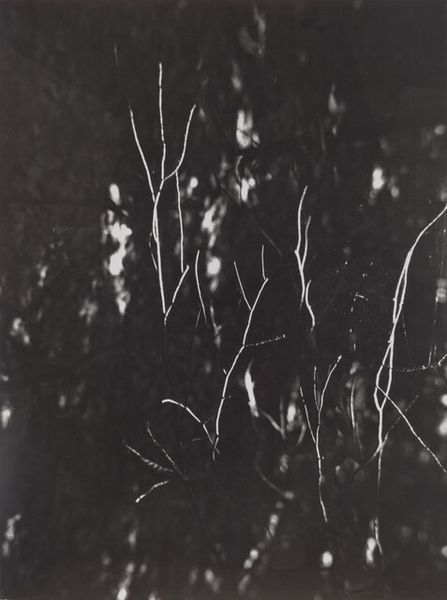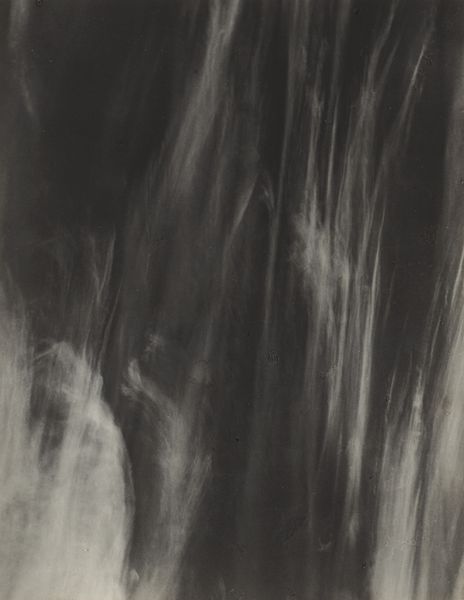
photography
#
conceptual-art
#
landscape
#
photography
#
environmental-art
#
modernism
Dimensions: image: 39.8 x 61 cm (15 11/16 x 24 in.)
Copyright: National Gallery of Art: CC0 1.0
Curator: Welcome. We're standing before Olafur Eliasson’s photographic work, "Untitled," created in 1998. It's a captivating image of an icy landscape, quite typical of Eliasson's interest in natural phenomena. Editor: It’s quite striking. The icicles dominate the frame, these long, almost oppressive forms. I'm getting a sense of confinement, like being trapped in an icy cavern. Is this Greenland, perhaps? The starkness is palpable. Curator: While the exact location isn’t specified, Eliasson frequently drew inspiration from Iceland’s landscapes. His approach goes beyond mere representation, though. He's very much interested in how we perceive nature. Conceptual art with an environmental edge, wouldn’t you say? Editor: Absolutely. Looking at this now, it speaks to our current climate crisis. These seemingly solid ice formations are actually incredibly fragile. They're potent symbols of our changing environment, and perhaps our own precariousness within it. I'm curious about the choice of photography, rather than, say, sculpture, to capture this landscape. Curator: That's an astute point. The photographic medium lends itself well to capturing fleeting moments in nature. There's an immediacy here, and a documentary quality. Eliasson often presents his work in series, encouraging a comparative viewing experience. The seriality allows him to underscore the transient nature of the ice, reflecting ecological anxieties of late modernism. Editor: Right. It also implicates the viewer in a very interesting way. As we gaze at the melting ice, we become complicit in the loss and transformation. Is there a statement being made, reflecting ideas about colonial power and destruction? I can't help but wonder whether Eliasson acknowledges the impact the introduction of photographic techniques and equipment had upon our natural landscape and the act of image creation? Curator: Interesting question. His work rarely makes direct political proclamations but raises ethical concerns. He encourages the public to actively consider the relationship between art and their surroundings and raises critical ecological questions. Eliasson invites a deeper engagement. Editor: True. Looking at how he plays with light coming in from that one point in the distance. And that gives one a glimpse beyond. In many respects, perhaps he did offer an exit for the viewer to find as well. Curator: Perhaps indeed. Ultimately, this work is about creating awareness and a critical understanding of the changing planet, leaving a resonating reminder to the observer of nature’s beauty and its precarity. Editor: Absolutely, a chilling reflection on a warming world. It stays with you, doesn't it?
Comments
No comments
Be the first to comment and join the conversation on the ultimate creative platform.
